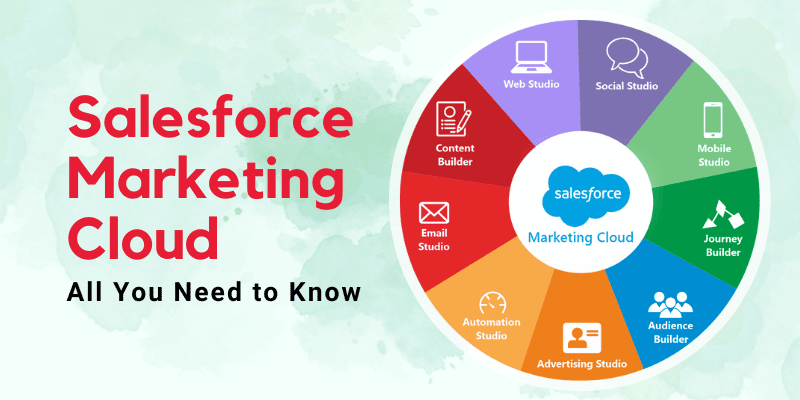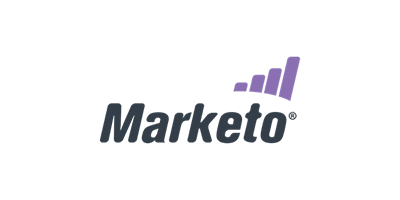
Drip marketing automatization is a fantastic way to send automated email messages to your subscribers in the order and at the time that they want. It helps you build relationships by regularly interacting with your customers.
A drip campaign is an email marketing sequence that's sent automatically based on triggers or user behavior. This is a great tool to keep subscribers informed and engaged about your products. It can also be used to drive one-time website visitors to your site, or increase engagement with your existing subscribers.
Drip campaigns come in different shapes and sizes, so you should choose the ones that fit your business goals. Whether you want to boost your conversion rates or improve customer retention, the goal should be clear and measurable before you start creating your drip campaigns.
The best drip marketing campaigns are consistent. They let your clients know when and how to expect their next email. These drip campaigns should have an easy-to-navigate layout and a compelling call to action that will make them click through.

It is important to first choose your target audience and then define the goals of the email. This will allow you to determine the best way to segment your list of email addresses and which emails are most effective for each group.
It's now time to decide how many emails will be included in your drip campaign. The number of emails you send will depend on the number of times the recipient has reached out to you. It also depends on their industry and location.
You can decide how often you send an email based on the actions taken by users, like clicking or opening. This gives your contacts the chance to respond quickly and helps you get to know them better.
A good way to create a successful drip campaign is by focusing on the most valuable segment of your overall audience. This will make your emails more likely to get read and respond, which could lead to more sales.
To create an effective drip marketing campaign, you can send relevant emails to recipients at exactly the right stage. This is often done by using an if/then statement to send your subscribers down different automation paths depending on criteria like data, campaign interactions, and more.

Be sure to monitor your results and regularly re-segment the audience you are targeting. This will enable you to continually improve your email marketing campaigns.
Businesses can use drip marketing automation to reach more customers and boost sales. It is an efficient and fast way to send emails when they are needed. You can also improve your conversion rates, as well as save time by not having to write email after email.
The drip campaign can be activated in many ways. From signups to abandoned carts and other methods. It can also promote new product suggestions and other relevant content. You can track your ROI to improve your marketing and generate more revenue.
FAQ
What is SEO automation?
Automation in SEO refers to the use of technology for automating marketing tasks and processes. Automation helps reduce time, costs, and improve the efficiency of execution. Automation can be used to streamline SEO activities, such as content creation and keyword research, link-building, SEO recommendations, reporting, etc. Automated SEO solutions offer data-driven analysis to identify high-value opportunities that are otherwise hard to uncover using traditional search engine optimization methods.
It's nearly impossible to do anything in SEO these days. That includes everything from monitoring websites performance and competitor insight to optimizing content for better search engines rankings.
With automation working in the background, teams can spend their time on strategic initiatives rather than getting mired in tedious manual tasks. Automation helps to deliver rapid improvements across many metrics in order to maximize ROI and save valuable resource.
It also allows you to keep up with the changes occurring across search engines. This will ensure that your website remains competitive in a constantly changing digital landscape.
Automating content creation and distribution can help you do it more efficiently. Automated SEO tools make it easy to create keyword-rich content that is relevant to your target audience. You can also use automation to schedule and publish content on various channels, including social media, blogs, and websites. This ensures that your content is more visible in search engine result pages (SERPs).
What are the differences between marketing automation types?
Marketing automation is an effective tool that helps you stay in touch with customers, optimize your marketing activities and make better decisions. It can save you time, increase sales and improve customer satisfaction.
But there's more than one kind of automated marketing system out there. Depending on your budget and business needs, you might consider:
-
Overall Automation Platforms: These are complete tools that can manage all aspects of marketing activities in one place.
-
Email Automation Software: This software allows customers to establish relationships by sending personalized emails that are customized to their preferences.
-
Lead Management Systems- These systems allow companies to monitor leads from the very beginning until they are converted into paying customers.
-
Content Creation Tool - Customize content to suit different audiences. You can also measure effectiveness in realtime.
-
Social Media Management Solutions: Streamline all messages, comments and posts associated with social networks into one dashboard. Quick action and response.
-
Analytics & Reporting Platforms - Keep track of what's working and what isn't so strategies can be adjusted accordingly on an ongoing basis.
Marketing Automation also helps you to create personalized customer experiences. HubSpot Automation and Pardot let you segment your customers based their behavior and preferences. This allows you to tailor your messages and content for each group, creating a more personalized experience for each customer. Automating customer activity allows you to better understand your customers' preferences and needs.
Marketing automation is a powerful tool which can save businesses time and increase efficiency. It streamlines processes, lowers costs, and creates personalized customer experiences. By leveraging the right automation tools, businesses can gain a competitive edge in the market and reach more customers in less time. Automation allows you to monitor customer activity and engage with customers so that your strategies can be adjusted on an ongoing basis. Ultimately, marketing automation is an invaluable tool that can help businesses succeed in today's competitive market.
Can I automate WordPress?
Automated WordPress takes the manual processes associated with managing a WordPress website and automates them. This automation makes it much easier to maintain an up-to-date website, quickly make changes to your site, keep it secure from malicious attacks, and keep track of user activity.
Automated WordPress makes it possible to update content automatically on the server, without the need to make any changes to the code. It also simplifies site maintenance activities such as backing up files and restoring data if needed. Automated WordPress can also provide integrated security solutions, which will identify any potential threats for your website.
Automated WordPress Tools can also help you collect information about your users, such as browsing patterns and demographics. These data can be used for other purposes, such as to improve marketing strategies.
Automated WordPress can improve efficiency while decreasing workloads and making managing websites easier. Automated WordPress simplifies repetitive tasks and gives valuable insight into the user experience. This helps you make better decisions.
Businesses can take advantage of marketing automation tools in order to streamline their operations, as well as the benefits of WordPress automated. Automated marketing solutions enable businesses to automate and track the performance of their campaigns in real-time. With these tools, businesses are able to quickly create campaigns, target certain customer segments, measure the effectiveness of their efforts, and monitor their progress. These tools allow businesses to save time and ensure that the right message is reaching the right people.
How can I automate a WordPress post?
Automating a WordPress blog post is the process of publishing content on your blog automatically, based on schedule or events. You can do this by creating an RSS feed or using automation services that allow you to publish automated content. You will also need to set triggers. This includes when the post should go live and who should be notified. Your content will reach the right audience when it publishes automatically by having the ability to set rules.
Jetpack or the Blogger Tag Editor can automate WordPress blog posts. This plugin allows for more control over automated posts. It also offers features such as customizing publishing date and time, author details and categories. You can also integrate your WordPress blog into social media platforms with plugins. That way, when you publish a new update, it will be shared to all your social networks.
Automating WordPress blogging takes careful setup. Site visitors who subscribe to email updates or receive news updates from third parties can have a better experience by ensuring that data is delivered promptly from external sources. This helps them stay in line with SEO guidelines.
Publishers can save time and money by using automation tools for WordPress blogs platforms. They also generate quality content that keeps readers interested without needing to post manually every day. Automated blogging solutions may not guarantee success but can bring benefits such as cost savings and better customer engagement.
WordPress marketing automation can be used to automate many aspects of digital marketing. Automating tools can be used for managing email campaigns, social media posts and other online activities. You can send automated emails on a regular schedule with customized messages to each recipient. Automated posts to social media can be planned in advance so that they are posted at the most engaging time. Automated analytics are a way for marketers to track their campaigns' performance and make datadriven decisions. Automating repetitive tasks can help businesses save time and free up more resources for creative projects.
Customer experiences can be personalized using marketing automation. Automation tools can be used to identify customers' interests and preferences, allowing businesses to tailor content and offers that are more likely to resonate with their target audience. Personalized messages can also be sent through automated emails based in part on the customer's browsing and past purchases. Automated social media posts can be tailored for specific audiences. Businesses can use automated analytics to track their campaigns' performance and make data-driven decision.
For businesses that want to simplify their digital marketing efforts, marketing automation can be a great tool. Automation tools can be used for email campaigns, posts to social media, and other online activities. Automation helps companies save time and allows them to focus on more creative tasks. Automating repetitive tasks can help businesses personalize customer experiences. This allows them to offer content and offers that resonate more with their target audience.
What are the top four features of marketing automation?
Marketing automation software promises to simplify, improve and deliver meaningful insights based on business goals. The right marketing automation tools will help you make real improvements across all channels and deliver results-driven campaigns. Here are four of the most important features:
-
Automated campaigns: Automation makes it easier and more efficient to manage complex campaigns by leveraging automated tasks which trigger based user behavior or other event.
-
Analytics & Intelligences: Use advanced analytics for insight into customer behavior to optimize future campaigns.
-
Customer Segmentation: Use customer segmentation to make sure that each campaign is personalized and targeted for maximum success.
-
Messaging: Create customized messages for each customer segment and increase response rates.
Businesses can save time by using the right marketing automation tools to create customized customer experiences. Automation tools allow you to segment customers into different groups based on their behavior and preferences, track customer activity and engagement, and send automated messages tailored to each customer segment. Marketing automation is an indispensable tool that can help businesses thrive in today’s competitive markets.
What are the benefits of WordPress marketing automation?
WordPress marketing automation provides many benefits for businesses. Automation automates mundane tasks such as segmentation and data analysis, which can save you time and money. Automating repetitive tasks like data analysis and segmentation can help businesses create personalized content that will increase customer engagement, improve conversion rates, and ultimately lead to increased sales. It also allows marketers to track website activity and ROI performance over time, helping them measure the effectiveness of their campaigns.
WordPress marketing automation enables businesses also to set up powerful triggers to send emails based off specific visitor actions and personalize customer journeys using personalized messages. This helps businesses build trust with customers and improve customer loyalty. Automation can also facilitate more efficient communication between departments, which can lead to improved collaboration and productivity.
WordPress marketing automation is a tool that helps businesses stay ahead in their industry by giving them automated insights into customer behaviour and trends. This allows marketers the ability to make informed decisions and adapt their strategies to suit changing customer needs. Businesses also benefit from automation in keeping up to date with the latest digital marketing technologies and trends, such as AI (artificial intelligence) and machine-learning (ML). This allows businesses to better target their audience and create more successful campaigns by leveraging these tools.
Statistics
- Marketing automation is one of the fastest-growing technologies out there, according to Forrester's Marketing Automation Technology Forecast, 2017 to 2023. (marketo.com)
- The highest growth for “through-channel marketing automation” platforms will reach 25% annually, with “lead-to-revenue automation” platforms at 19.4%. (marketo.com)
- Companies that implement this kind of lead scoring enjoy 28% better sales productivity and 33% higher revenue growth than companies without lead scoring (MarTech Alliance). (marketo.com)
- It can help reduce administrative overheads to savings of 3.4% on average, with most companies saving between 1.5% and 5.2% (Lido). (marketo.com)
- The stats speak for themselves: Marketing automation technology is expected to show a 14% compounded annual growth rate (CAGR) over the next five years. (marketo.com)
External Links
How To
How can I assess the effectiveness of my content marketing automation efforts
Asking the right questions will make content marketing automation a success. What is working? What's working? What is working? An analysis of metrics such as conversion rates, engagement, social shares, lead generation, and social media will help you determine the effectiveness your campaigns.
To identify trends and patterns in data, you can get insight into which strategies are most effective at driving results. You can now focus your efforts on optimizing automation for maximum impact and efficiency.
Take the time to find out what your customers think about your content. You can get feedback directly from your customers to ensure that your campaigns deliver meaningful messages and drive measurable results.
In summary, assessing the effectiveness of your content marketing automation efforts requires a careful blend of quantitative and qualitative analysis. Are you communicating the right message? Are people clicking through, or opening? Does your organization see a positive return-on-investment? So you know what success looks and can quickly adjust your course if necessary.
Once you have identified what success looks like, it's time to start optimizing your content marketing automation efforts. You can test different strategies to determine which ones work best for you. Try different types of content like videos, infographics or podcasts. To find what resonates with your audience best, you can experiment with different distribution times and frequencies. The more you try, the better your results.